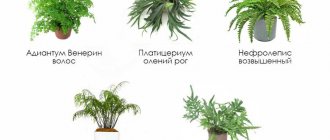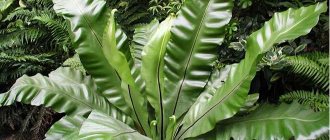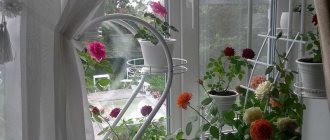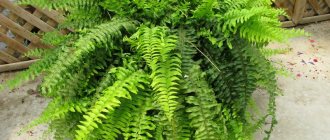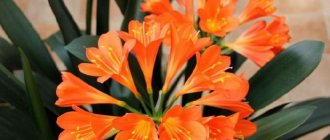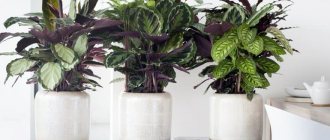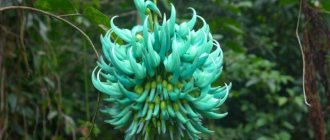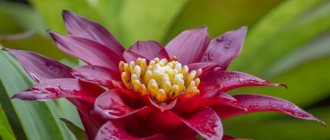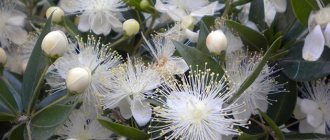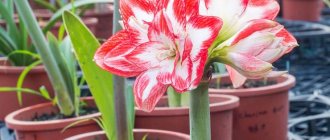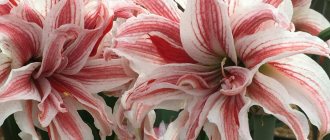The nature of the Earth is incredibly diverse, with many varieties of plants having herbaceous, tree, and shrub forms. We all know from our school botany course that our planet was once inhabited by giant tree ferns. The first such giant plants appeared more than 400 million years ago, during the Paleozoic era (Devonian period). But after 100 million years they began to die out and this process continues now.
Some species disappeared forever from the surface of the Earth, others survived the cataclysms that struck the Earth, were able to adapt to the changed conditions and survive, taking the form of herbaceous, liana-like plants. But some still amaze us with their size. Most ferns are moisture-loving, shade-tolerant crops. By the way, it was these plants that became the basis for coal deposits.
The place of ferns in the plant world
Ferns belong to higher plants . They differ from lower ones by the presence of special organs:
- root;
- stem;
- leaves.
Higher ferniformes, in turn, are divided into:
- to vascular;
- to checkered or mossy.
Fern belongs to the first group, characterized by the presence of vascular-fibrous bundles . For example, in leaves these bundles are contained in the form of veins along which juices move.
Ferns are divided into two subclasses:
- real;
- water.
How many types of ferns are there in total? Real ferns are amazing in their diversity. We can say about them that some can look like moss and grow densely on the trunks of tropical trees, reaching a size of several centimeters. This variety is called epiphytes. Translated from Greek it means “on the plant.” Others can reach twenty-five meters in height and resemble spreading palm trees in their appearance. Castings can be several meters long.
Water ferns will be discussed below.
The editors of the site recommend that you read the description of the types of home succulents.
From antiquity to modern times
Ferns, or, as they are commonly called in the scientific world, polypodiophytes, are representatives of higher vascular perennial plants, and also very, very ancient.
The first of them appeared on the planet approximately four hundred million years ago, when there was no trace of flowering crops. The era of prosperity of ferns falls on long-past eras - the Paleozoic and Mesozoic. During this period, most ancient ferns were huge palm-like trees. These huge plants occupied a decisive position in the appearance of the Earth. Subsequently, the wood of ancient ferns served as the basis on which coal was formed.
Ferns have come a long way from their appearance on the planet to the present day. Among the few ancient plants, they have managed to maintain a wide diversity comparable to what came before. While other representatives of the flora disappeared from the globe, ferns evolved and formed new species. And yet, they have room for improvement.
Reproduction and prevalence
In the absence of flowers, ferns reproduce using spores . Since this method was not known to science until the nineteenth century, the fern was called secretagogue. In addition to spores, the reproductive organs can be the so-called brood buds that develop on the leaves.
Most ferns—up to 3,000 species—are distributed throughout tropical forests . In total there are up to 4000 species.
Modern ferns are mostly herbaceous plants . In temperate climates, perennials with strongly developed roots grow.
How do they reproduce?
Most fern organs reproduce through vegetation.
To do this, you need to divide the plant's root system into several parts.
Reproduction can also occur with the help of lateral buds, shoots and spores.
To propagate ferns at home, select the type of propagation depending on the type of plant.
To reproduce by spores, you need to prepare special soil.
To do this, combine 1 kg of sand, 3 kg of garden soil and 3 kg of peat.
You can also use ready-made soil for growing violets.
The spores need to be collected in a paper bag and scattered on the surface of the soil, which must first be watered with water. Cover the container with glass and place it in a warm place that is well lit by sunlight.
Ferns are heat-loving crops and prefer to grow at temperatures from +20°C to +25°C. Caring for home crops is not difficult because they have a sexless life cycle.
To ensure that the leaf blades delight you with their beauty, regularly water the soil and monitor the air temperature. You also need to make sure that the plant receives plenty of sunlight.
Homosporous ferns - types and names
Systematizing ferns is not an easy task. By the type of spores, they are homosporous, that is, their spores are of the same sex.
Homosporous, in turn, are divided according to the sporangium - the organ that produces spores. In some ferns it develops from one group of cells and is equipped with a single-layer wall, in others it develops from several and has a multilayer wall.
These are very ancient plant species that were widespread. Today there are approximately two hundred of them.
Main diseases and pests
Usually the plant begins to get sick or is attacked by pests if it is constantly cared for incorrectly.
If the fern is watered with unsettled water, which contains a high content of chlorine, or if it is cold, then a nematode may attack it. At the same time, the foliage begins to turn yellow and fall off. Usually the only salvation is an urgent bush transplant. When transplanting, be sure to treat the fern with insecticides.
If the humidity in the room is low, the fern can be attacked by pests such as scale insects, aphids or thrips. You should spray your plants every day to avoid this. If insects do appear on the foliage, then the fern should be treated with special preparations.
Ferns with multilayered sporangium
These include the grasshopper and marattiaceae families.
Among the first to be found in Russia are:
- common grasshopper;
- Key-grass.
The latter are common in the humid tropics, often in mountainous areas:
- angiopteris;
- macroglossum;
- Marattia.
Green grass family
Uzhovnikovye, pagan - these are Russian names. The literal translation from Latin is “snake tongue.” The shape of the leaves of this family is what gave these plants their name. They are divided in two and resemble a fork. Each part performs its own function. One is vegetative (reproduction through leaves), the other is fertile (spore-bearing).
About eighty species are known, the classification of which is combined into three genera:
- zhovnik;
- moonwort;
- helminthostachys.
Uzhovnikov are one of the most ancient groups of plants. They are very different from other types of ferns in their biological characteristics and occupy a rather isolated position. Uzhovnikovye - perennial plants, sometimes evergreen, small or medium in size. They prefer loose and moist soil and open areas. However, some tropical species, like moss, live on tree trunks in the dark corners of the rainforest.
The largest representative of the family is the pendulous grasshopper . In accordance with its name, it has drooping leaves that are two or even four meters long. But there are also very small plants - only a few centimeters long.
Uzhovnikov have stems, which for the most part are rhizomes that have emerged from the ground and stand at attention. They are thick and fleshy. The only exception is helminthostachys , which has horizontal roots. As a rule, branching of stems is not observed. The stems and leaves of ferns are soft and fleshy, unlike most ferns. Hairless roots usually contain lower fungi associated with them, the so-called mycorrhizal ones.
The leaves of the grasshoppers are very distinctive. They do not have the snail-like twisting characteristic of most ferns when they emerge from the bud. Another feature of the leaves is the presence of special sheaths that obscure the bud.
Basically, the grasshoppers produce one leaf every year, less often - four. Therefore, the number of leaf scars on the rhizome allows us to judge the age of the fern. Slow leaf growth is also a feature that characterizes snake tongues. The leaves fully emerge to the surface around the fifth year of their development.
In our country, grasshoppers are distributed in pine forests, where they are most diverse. These include, for example, multifidus .
Family Marattiaceae
There are more than 60 species. Although they resemble their tree-like counterparts, they are not. Marattiaceae sometimes reach very impressive sizes and are among the largest plants on Earth. But their size is determined not by the stem, but by five- and six-meter leaves. At the base they are equipped with stipules. The stems themselves are no longer than one meter, look like potato tubers and are almost half in the soil.
Marattiaceae, like grasshoppers, are distinguished by their originality. Their giant leaves have appendages at their base that do not disappear after falling. They not only protect the plant, but also accumulate starch. They are also intended for reproduction. They have buds that are at rest. When favorable conditions occur, the buds give birth to new ferns. The stems, leaves and roots of marattiaceae necessarily contain mucus ducts. They are long channels, separate cavities or cells and serve to preserve substances that are temporarily excluded from metabolism.
Angiopteryses belonging to the Marattia family live in shady swampy forests and gorges and are very numerous. Also found along roads and on river banks. Their huge leaves are double pinnate. In pinnate leaves, the leaf blades are located along the length of the main petiole. And bipinnates are divided twice, their plates are attached along the second petioles connected to the main petiole. The main and secondary petioles have thickenings at the joints. Thanks to this feature, the petioles are similar to a bamboo stem and have a thickness comparable to the thickness of a human hand.
Most of this family became extinct. Of these living fossils, only seven genera survive today. They live in tropical areas. Marattiaceae are often bred in greenhouses.
STRUCTURE OF FENS
Ferns (Polypodiophyta) are a division of higher plants occupying an intermediate position between rhinophytes and gymnosperms. Ferns differ from rhiniophytes mainly by the presence of roots and leaves, and from gymnosperms - by the absence of villages. Ferns originated from rhiniophytes, to which the oldest Devonian ferns were very close. Some of the most primitive genera were intermediate forms between rhyniophytes and typical ferns). Ferns, like other higher plants, are characterized by an alternation of generations - asexual (sporophyte) and sexual (gameophyte), with the dominance of the asexual generation.
Fern sporophyte is a herbaceous or tree-like plant, mostly with large, repeatedly dissected leaves (young leaves are usually snail-shaped). Ferns are characterized by a wide variety of shapes, internal structures and sizes. Their leaves vary from multiple pinnately dissected to whole, from gigantic - 5-6 m long (in some representatives of Marattia and Cyathea) and even up to 30 m (curly leaves in Lygodiu articulatum) to tiny leaves only 3-4 mm long, consisting of 1 layer cells (in Trichomanes goebelianu). The length of the stems of ferns varies from a few centimeters to 20-25 m (in some species of Cyathea). They are underground (rhizomes) and aboveground, erect and climbing, simple and branched. In most sporangia are located on ordinary green leaves; some leaves are differentiated into spore-bearing (sporophylls) and vegetative, green.
Most ferns are homosporous. Among modern ferns, only three small families of aquatic ferns are heterosporous: Marsileaaceae, Salviniaceae and Azollaceae.
Monosporangaceae: types of ferns, names and photos
The sporangia of this type of fern grow together into one whole, looking like a shell attached to a stalk. These include, in particular, polypodiums or centipedes and salviniaceae.
Polypodiums
Polypodiums are one of the largest fern families, comprising 50 genera and about 1,500 species. Their leaves are two-rowed, the roots are fleshy and covered with hairs. A characteristic feature of centipedes is the unusual crowded arrangement of sporangia on the leaves.
These are perennial plants covered with scales; their rhizomes are either creeping or upward. The leaves can be pinnate, doubly pinnate, or lobed - having cuts, consisting of several plates emerging from one point.
These plants are distributed mainly in the tropical zone of Eurasia. Most often they are classified as epiphytes and can grow on trees, rocks, and in the ground.
Water ferns - genus Salviniaceae
Salvinia is not so widespread. Its characteristic is that it refers to annual aquatic plants that grow close to the river bank or in a swamp and calmly float on the water. In appearance they resemble a four-leaf clover. Its most common genera are Marsilia and Salvinia. Their sporangia are located inside sporocarps.
Sporocarps are leaves or parts thereof that were greatly modified once upon a time, containing two or three groups of sporangia. They are located at the base of the leaf, have a grayish-brown color and are shaped like a bean.
Salvinia waterfowl has no roots. Found in the southern regions of Russia. Its stem is branched, covered with aquatic and aerial leaves. The leaves are whorled, located two or three on each node of the stem. Whorls of both types alternate with each other. First there are four rows of aerial leaves, and then two rows of water leaves. In accordance with their name, aerial ones float on the water surface, and water ones are immersed in it.
There is a variety of Salviniaceae called Azolla . It is also interesting for its structure. Azolla has a branched stem, on which there are two rows of leaves on the “back”, and one row of roots on the “abdomen”. Each sheet is divided into two halves, one of which is floating and the other is submerged.
Adviсe
There are some general growing tips that have been learned by experienced gardeners. This will be discussed in more detail below.
On the farm
It is used as a raw material for pharmacology or the food industry.
You can plant ferns at home and use their leaves to make salads.
Also, such greens can be used as spices for main dishes. To do this, it needs to be dried.
If preparations are made from fern, they can be used to treat wounds, rheumatism and headaches.
Their growth is active, so they should be transplanted once a year. You need to constantly change the earthy lump.
Plants prefer to grow in moist soil that contains a lot of humus.
If you make your own soil for planting, mix 1 kg of leaf humus and 1 kg of sand.
Such soil will be well moistened and moisture will not stagnate in it. Ferns prefer to grow in soil with high levels of acidity.
Prevalence in nature, examples of species
Where and when a fern grows directly depends on the level of humidity and ambient temperature. Simply put, what climate prevails in a given area. They can live in forests, rivers, lakes, swamps, as well as in damp meadows, ravines, roadsides, and rock crevices.
Reproduction of ferns - diagram and description
About 100 herbaceous plants are found in temperate climates. Descriptions of ferns depend on the species:
- Bracken: The fern leaf of this variety is easily identified by its umbrella-like shape when open. It lives in forests (mainly pine) and is suitable for food.
- Male shieldweed with stems up to 1.5 m long, a rather rare species, its extract has the medicinal property of killing helminths, which is successfully used in medicine.
- Polygonum is distinguished by dark green leaves, which are arranged in a row on the stem.
- Osmunda grows in natural conditions in eastern Asia and the American North, and is distinguished by the shiny surface of its elongated leaves.
- Female kochedyzhnik is a large plant with graceful leaves.
- Ostrich is known as one of the most beautiful ferns; it has long rhizomes that create real thickets; this effect is used in landscape decoration.
On a note! When boiled, ostrich leaves are edible.
There are varieties intended for growing indoors:
- Pteris;
- Dixonia;
- Kostenets;
- Davallia;
- Nephrolepsis;
- Asplenium.
Common ostrich
Separately, it is worth highlighting Junior - a variety with corrugated sheets.
Interesting! There are very tiny ferns with stem heights no more than 12 mm. A striking representative is Azolla cariliniana, which grows on trees and vines.
In the mountains you can see another amazing plant with graceful openwork leaves. It's called Venus hair. There are also underwater inhabitants, for example, Marsilea quadrifolia. And the Dicranopteris fern has very strong petioles.
There are ferns that are rare and endangered species. Thus, Salvinia is listed in the Belarusian Red Book.
Analysis of the structure of fern plants
The ancestors of ferns were simpler in structure than modern species.
Leaves, fronds
The peculiarity of the structure is represented by massive leaves, which are heavier than the entire stem of the fern. They are distinguished by a variety of forms and have their own characteristics in growth and structure. Typically, the leaves are feather-shaped and dissected. Fern leaves are called fronds (this definition is given by scientists). The leaf petiole is attached to the stem part, which is located underground, so it is not immediately possible to see the beginning of the leaf.
On a note! The peculiarity of fern fronds is that they grow at the top, resembling a snail. At first the sheet is folded, and then gradually unfolds.
Leaves develop first underground. This period lasts 2 years. In the third year they become visible above the surface. Due to the growth of the tops, rapid growth occurs. For many, fronds take part in photosynthesis, the growing season and sporulation.
Spores are formed on the reverse side of the leaf blade, either singly or in groups.
Leaves
Stems
The stem of ferns is always small and poorly developed. The exception is plants in the tropics, which grow to the size of a tree. Their trunks are large and covered with bark. The climbing stem can be very long.
Root system
The root system is represented by a rhizome and many appendages. The stem is covered with tissue that perfectly conducts and absorbs water. It moves along the vascular bundles to the leaves.
Reproductive organs
The entire life of a plant has 2 main cycles:
- Long-term asexual, when the fern does not reproduce, is a sporophyte.
- Short – gametophyte, when reproduction occurs.
The reproductive organs are represented by sporangia, which contain spores. They are located on the reverse side of the sheet. When the spores are mature enough, the wind carries them over long distances.
Attention! Some scientists equate sporulation with flowering.
Not all spores survive, only some do. The reproduction phase begins with germination and transformation into a shoot, which is called a gametophyte. It resembles a plate several mm in size in the shape of a green heart.
At the bottom of the gametophyte, antheridia and archegonia are formed, respectively, female and male reproductive organs. They produce eggs and sperm, which combine when there is a sufficient level of humidity. The result is a zygote. It is from this that the embryo of the future plant appears.
Sporulation
Ferns can reproduce vegetatively. In this case, brood buds appear on the roots and stem. Rare and beautiful varieties reproduce only through spores.
